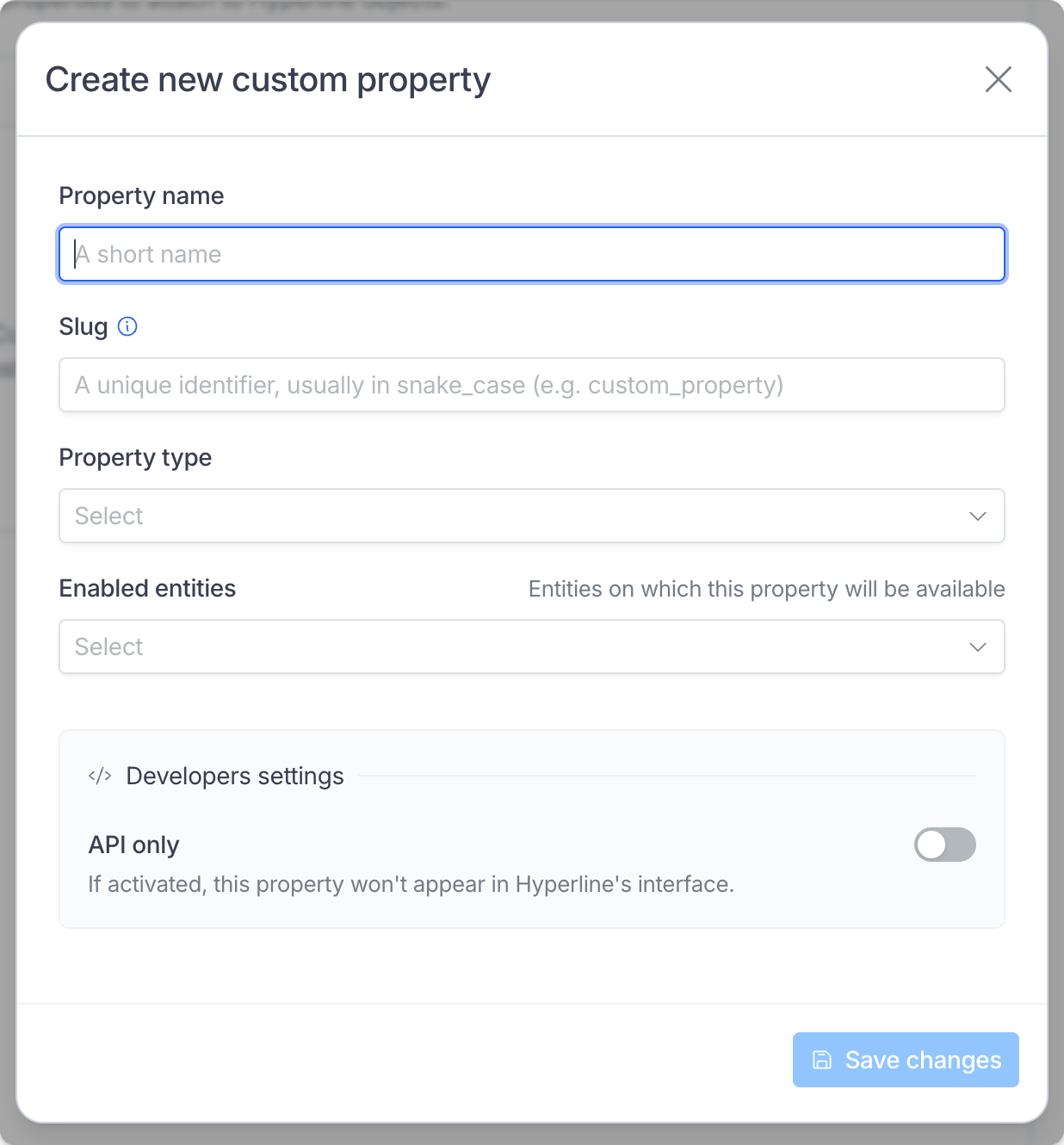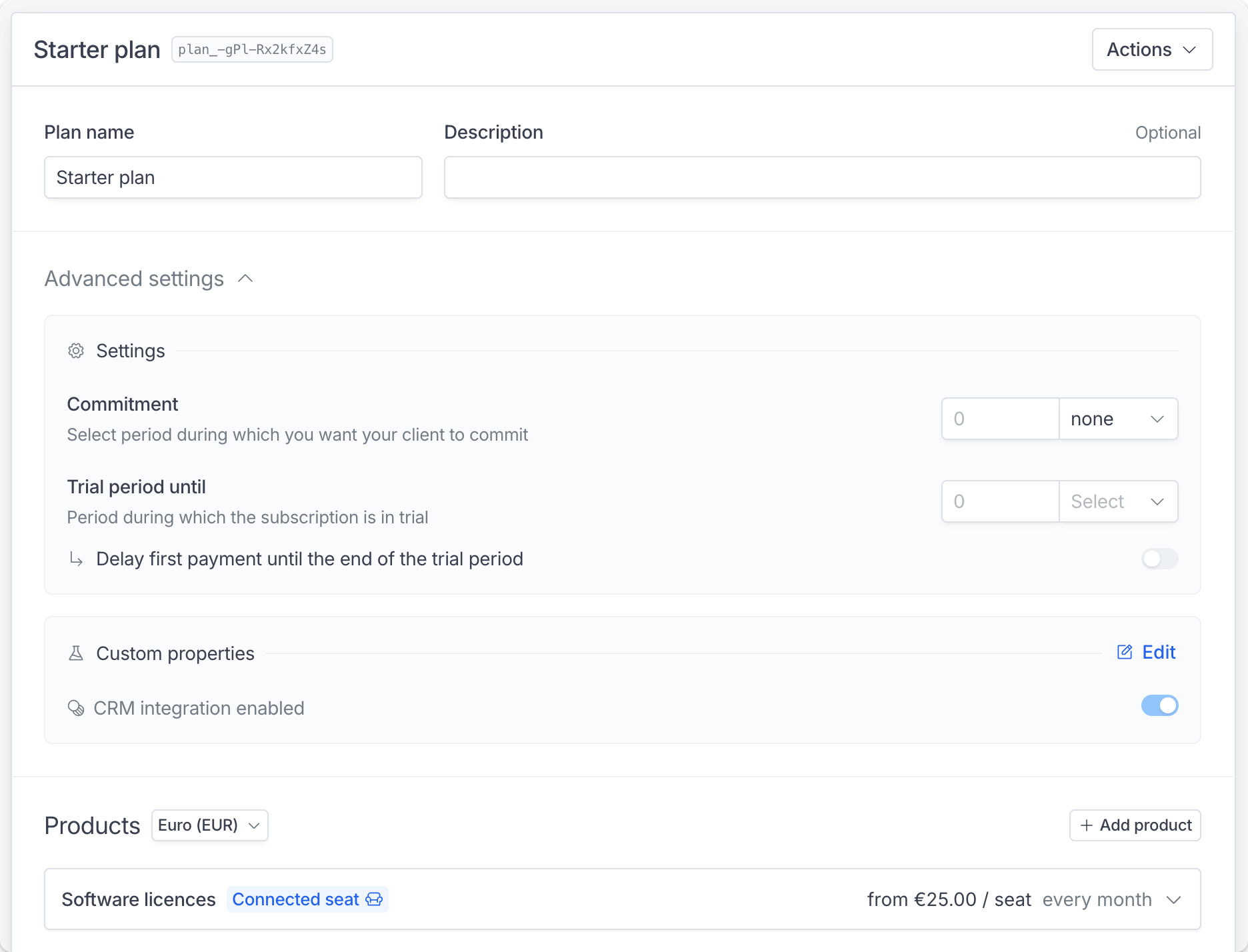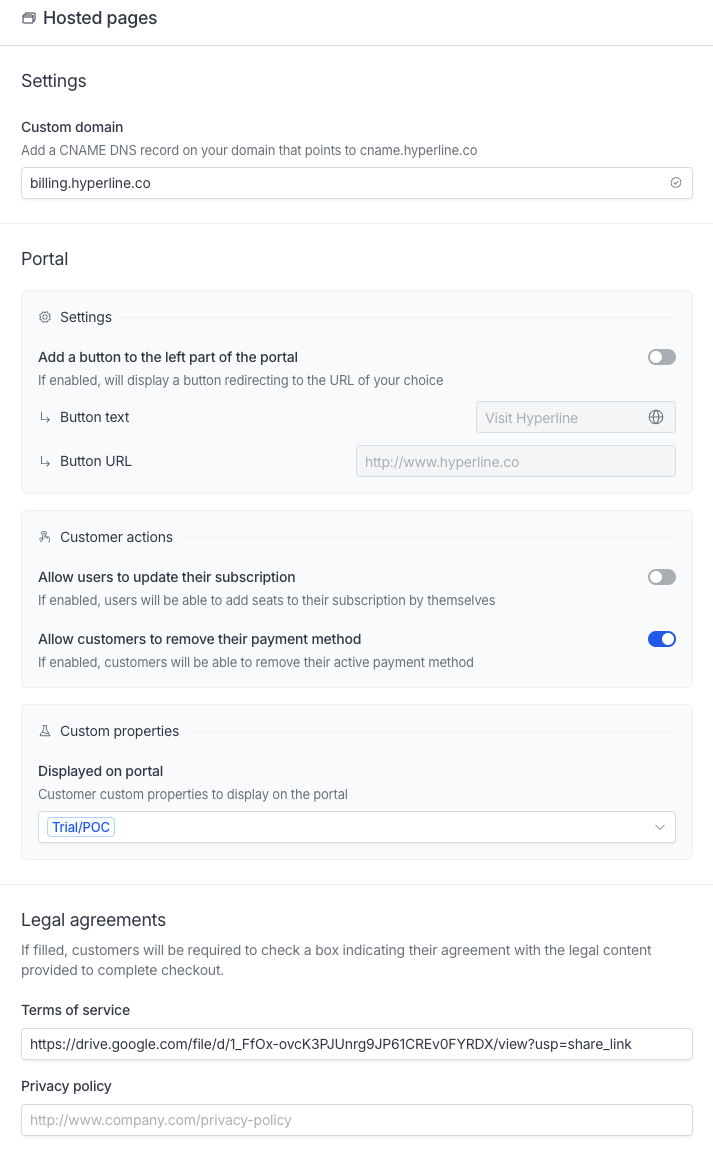Use cases
Custom properties provide a wide range of possibilities. For example, they can be used to represent additional fields for your customers, integrate extra billing details into your plans, assist in entitlement and feature flagging by representing features activatable on specific products or subscriptions. These are just examples, and they can be customized to meet any specific needs based on your use case.Create a custom property
1
Navigate to Settings then Custom properties
2
Click on New custom property
3
Fill the form

Managing custom property values
When created, the custom property can be found on the related entity in the interface. On the customer, the custom properties appear in the bottom of the information panel on the customer details page.


Displaying custom properties on hosted pages
For now it is only available for the customer portal page. You can decide to select which custom properties to display on the customer portal by navigating to the Settings > Hosted pages section.
Using the API
You can create, retrieve and manage custom properties using the API. Additionally, you can retrieve the values using thecustom_properties field when fetching a customer, product, plan.

